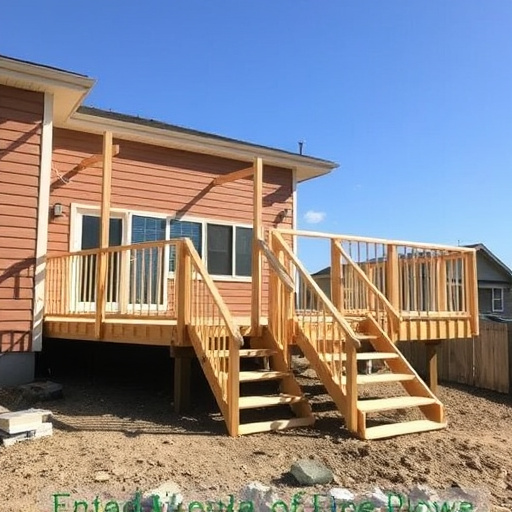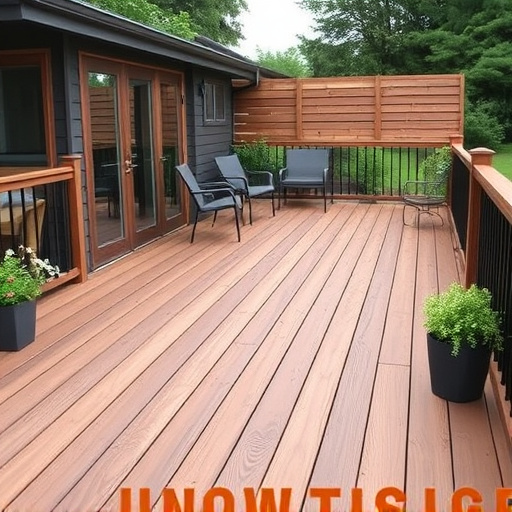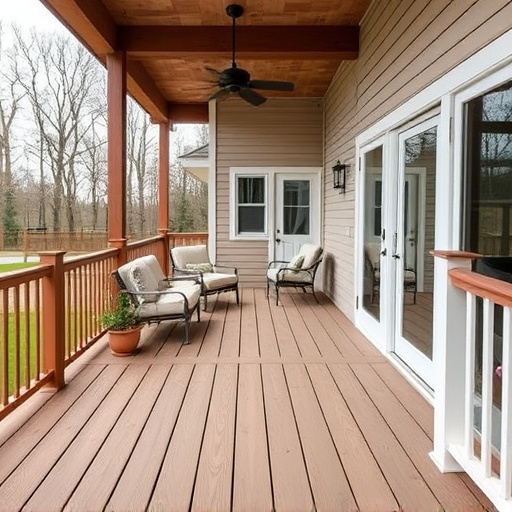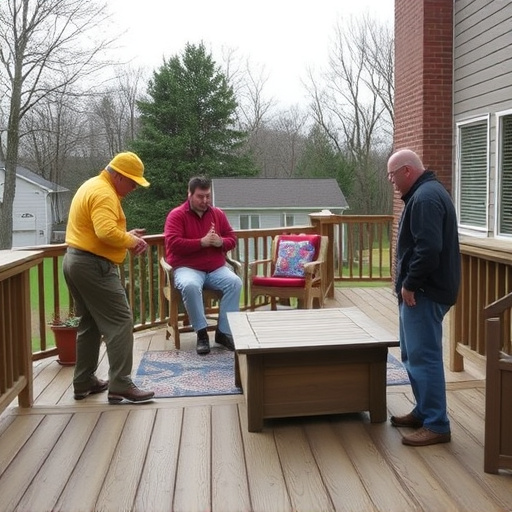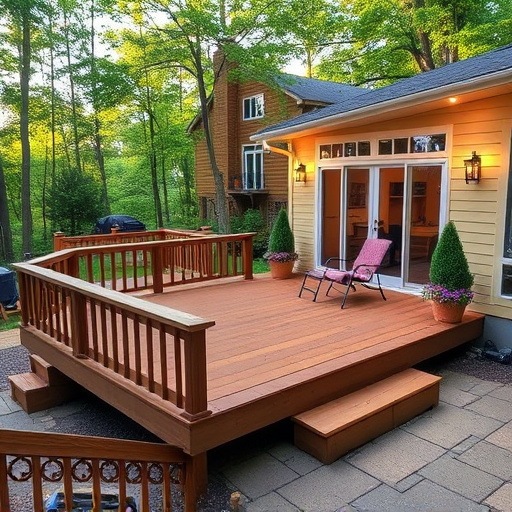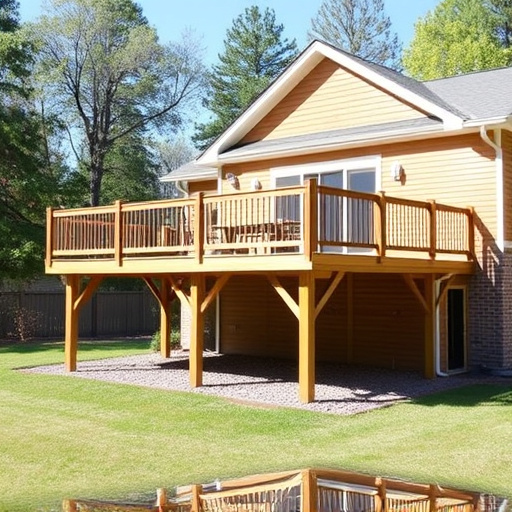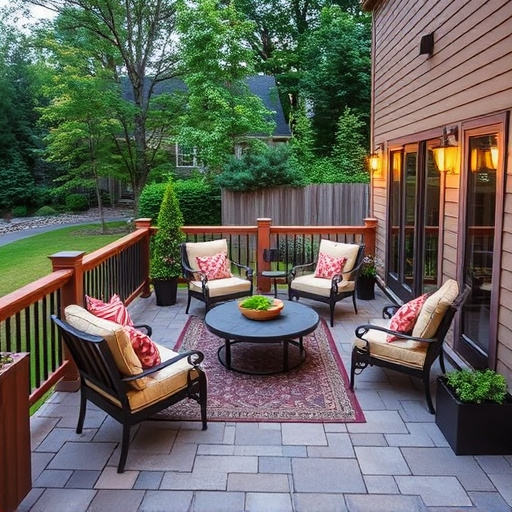Outdoor deck maintenance is crucial for safety and aesthetics, focusing on preventing slip-and-fall risks from moldy, mildewed surfaces. Deck builders should prioritize anti-slip solutions during construction or post-installation, using durable materials like treated wood or composites resistant to rot and mildew. Regular cleaning, fungicidal treatments, and specialized coatings further enhance safety and maintain deck appeal for both deck builders and homeowners.
Slip-resistant decking not only enhances safety but also addresses a significant concern—mold and mildew growth. This article delves into these issues, offering insights for deck builders and homeowners alike. First, we explore the causes and effects of mold and mildew on decks. Next, we emphasize the critical role of slip resistance in outdoor living spaces. Finally, we guide you through material choices that combine durability with superior hygiene, ensuring a long-lasting, low-maintenance deck.
- Understanding Mold and Mildew on Decks
- The Role of Slip Resistance in Deck Safety
- Choosing Materials for Longevity and Hygiene
Understanding Mold and Mildew on Decks

Mold and mildew are common issues that can plague outdoor living spaces, particularly decks. These unwanted intruders not only pose health risks but also cause aesthetic damage. Understanding how they thrive in specific environments is crucial for deck builders and homeowners alike. Decks provide an ideal breeding ground due to their constant exposure to moisture from rain, sweat, or spilled beverages. The organic matter present in wood, a common decking material, further fuels their growth. Over time, mold and mildew can create slippery surfaces, posing trip hazards and making decks less safe for users.
Professional siding experts often emphasize the importance of regular cleaning and maintenance to prevent these issues. Deck builders can offer tailored solutions by incorporating slip-resistant treatments during construction or applying them post-installation. Additionally, considering options like non-porous materials or coatings that inhibit moisture absorption can significantly reduce mold and mildew growth. For those dealing with existing problems, siding repairs and installations may be necessary to restore the deck’s safety and appeal.
The Role of Slip Resistance in Deck Safety

In the realm of deck maintenance, ensuring safety is paramount, especially considering the frequent use and exposure to various weather conditions. One of the critical aspects often overlooked is slip resistance, which plays a pivotal role in preventing accidents and injuries. Deck builders and homeowners alike must recognize that smooth or slippery surfaces can pose significant risks, particularly during rainy seasons or when ice forms. Choosing slip-resistant decking materials is an essential step towards creating a safer outdoor living space, reducing the chances of costly falls and associated medical emergencies.
For deck builders, offering solutions with superior grip is not just about adhering to safety standards but also providing long-lasting satisfaction for clients. Incorporating anti-slip technologies into decking can deter serious storm damage repair needs and ensure the deck’s longevity. Moreover, considering mold and mildew resistance alongside slip prevention can lead to all-encompassing outdoor flooring options, where roofing solutions and siding repairs are less frequently required, thereby saving time and money in the long run.
Choosing Materials for Longevity and Hygiene

When it comes to slip-resistant decking that also resists mold and mildew growth, selecting the right materials is key. Deck builders should opt for durable, low-maintenance options that can withstand the elements while promoting hygiene. Treated wood or composite materials are excellent choices, as they are naturally resistant to rot and mold. These materials also provide a textured surface that enhances traction, making them ideal for creating safe and secure outdoor living spaces.
For added protection against mold and mildew, consider using products with built-in fungicidal properties or applying specialized coatings after installation. This two-pronged approach ensures that the decking remains not only slip-resistant but also free from unsightly and harmful growth. Moreover, choosing materials that are easy to clean further enhances hygiene, making it simpler for deck builders and homeowners alike to maintain a pristine outdoor environment, much like how professional siding services keep residential siding in top condition.
When it comes to creating safe and durable decks, slip-resistant surfaces are essential for preventing accidents. By understanding the impact of mold and mildew and selecting materials that resist growth, deck builders can offer homeowners a low-maintenance, hygienic space. Combining these factors ensures a high-quality deck that provides both safety and longevity, meeting the needs of modern outdoor living.



